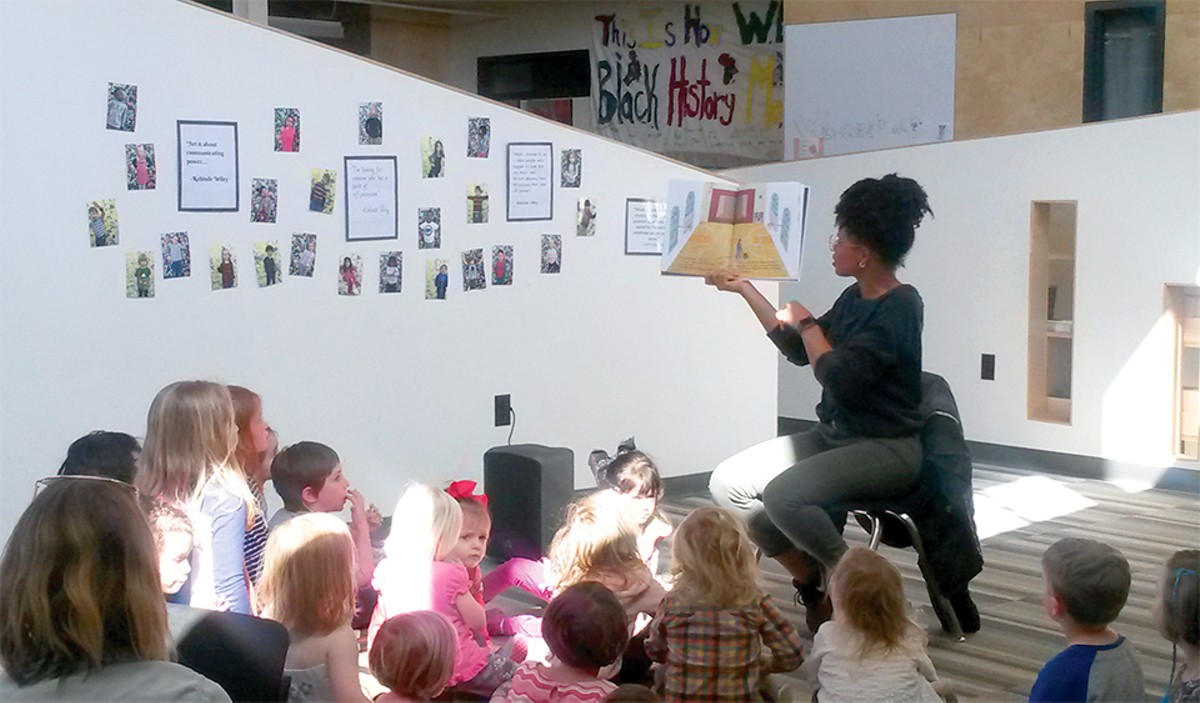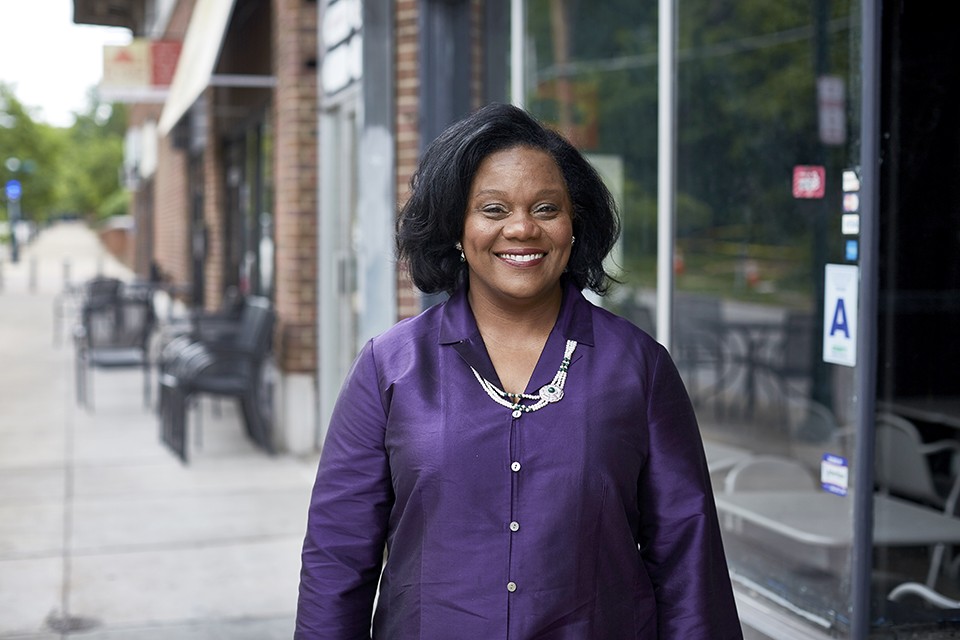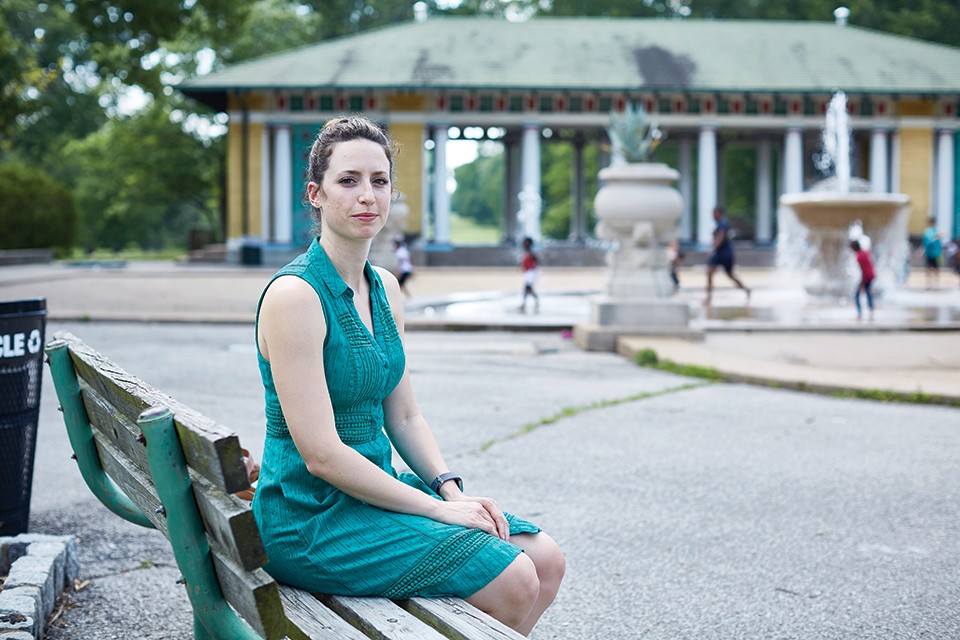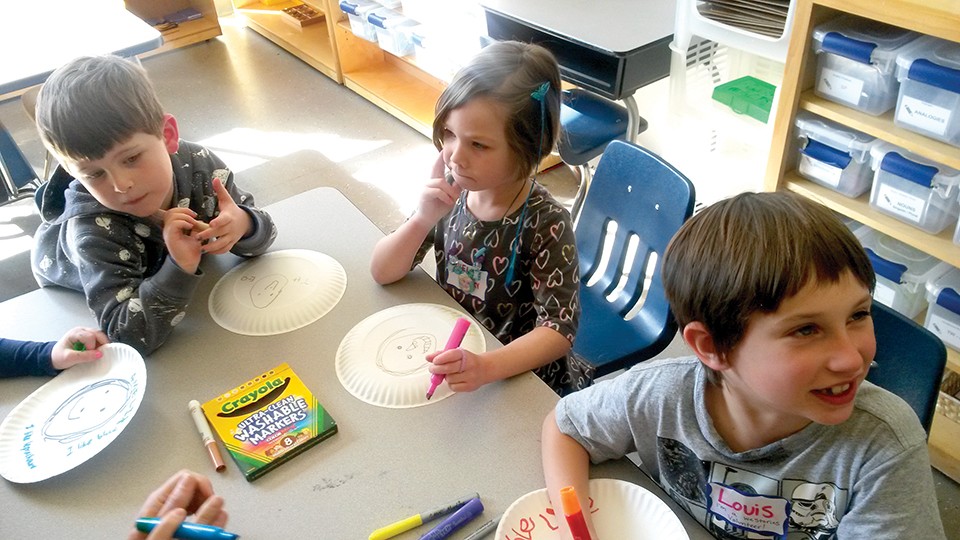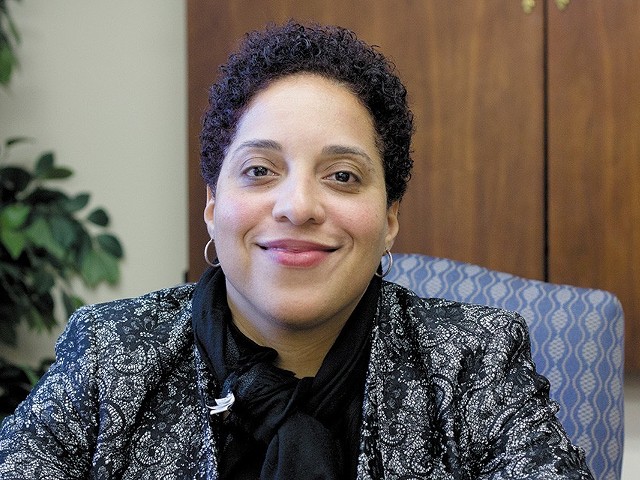Dave Ziegler is white.
Like the majority of people in the St. Louis area, he lives in a neighborhood and attends a church where most everyone looks like him. He held jobs where most everyone looked like him. And he never thought much about it.
"When I was in high school and college, it was the civil rights movement," says Ziegler, 74. "I knew about that but didn't worry about it, because it didn't affect me."
He got married, had children, worked, retired. Last fall, he heard about a book discussion group centered on race and racism — through the perspective of white folks. A section would be meeting at his south St. Louis County church. His daughter encouraged him to sign up with her.
"I thought I might as well try it and learn something new. I had never done anything on race before," Ziegler says.
The Witnessing Whiteness group at Mary, Mother of the Church is one of eleven in the St. Louis area that started in January, each with fifteen to 25 participants and three facilitators. By design, everyone is white.
The program itself stems from a 2007 book of the same name written by a white woman, Shelly Tochluk. A black woman, Amy Hunter, conceived the discussion group two years later when she was the racial justice director at YWCA Metro St. Louis.
"I read about 35 books before deciding on Witnessing Whiteness," says Hunter.
Each YWCA in the United States is required to have a "hallmark" program around racial justice. Hunter had looked at ones for cross-racial groups and concluded they weren't working. She decided a "racial affinity" group of only white people would be more successful. Everyone has work to do on racial issues, she said, but white people and people of color are coming from different spaces.
"People of color are fatigued of doing all the teaching in these sessions. White people were sitting back and listening and learning, and it wasn't fair," says Hunter. She adds, "White people gave me the most challenges on why it wouldn't work; they thought white people would need people of color in a room."
That was, in fact, what Ziegler thought when he first signed up for Witnessing Whiteness. But once the sessions started, he realized that he felt more comfortable discussing difficult topics when he wasn't worried that he might unintentionally hurt or offend someone.
The YWCA hosts separate groups for people of color, with different objectives, often centered on overcoming trauma and oppression. Occasionally, black people have asked about joining Witnessing Whiteness; the YWCA provides them the rationale for its affinity grouping and points them to programs such as the black-only Sister Circles, the organization says.
Hunter structured Witnessing Whiteness so each session focuses on a chapter in Tochluk's book. But the program is not a traditional book club. There are no discussions of character development or literary merit. Instead, participants form what Hunter calls a "collectivist culture." You can't get kicked out for saying the wrong thing. Everyone assumes good intentions. Everyone contributes.
"In white communities and white culture, the patterns are to be an individual rather than a communal and a collective," says Hunter. "This group flies in the face of that ... it's creating a loving environment where people can grow and connect with each other. Instead of this being a book club, people can come and grow and contribute."
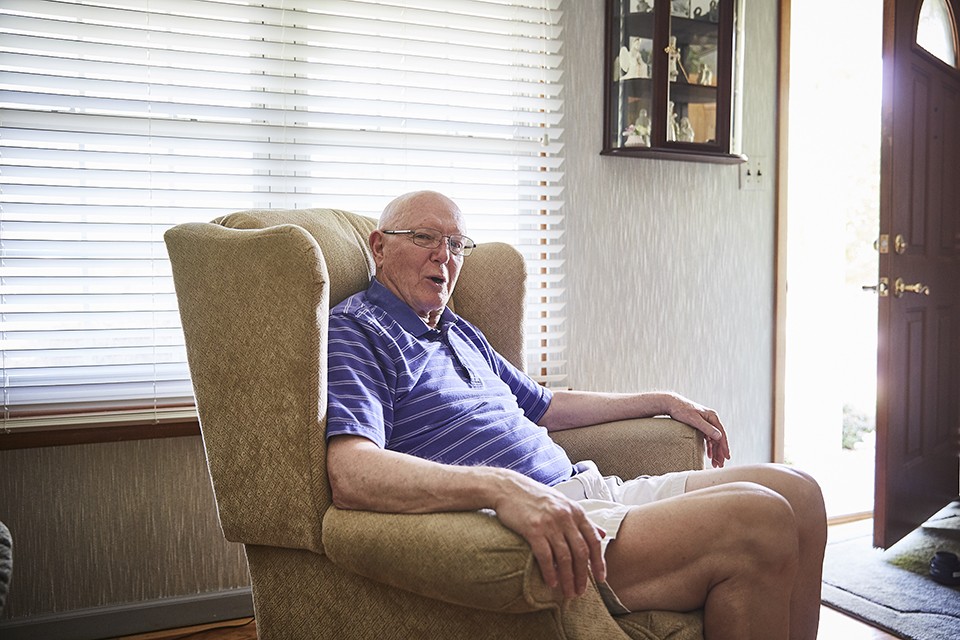
FEW RESOURCES
Tochluk, a professor of education at Mount St. Mary's University-Los Angeles, didn't anticipate any specific paradigm coming out of Witnessing Whiteness when she wrote it twelve years ago. She had completed a dissertation on white identity in relation to people of color and cross-racial relationships. She found a few resources when she was doing research, but not many.
Her book is divided into three sections: racial history and background, interracial friendships and self-examination and a call to action.
"All white people have a role in confronting racism," says Tochluk. "There is a targeted, purposeful intent to twist racially conscious work into something negative instead of recognizing that 'colorblindness' has contributed to ongoing systemic racism."
Any publicity around the book, she says, unleashes a renewed surge in hate mail. "For people who don't really understand, there is a fear that work like this is meant to make people feel like they're not good people. But that's not it at all.
"It's not about shame and guilt. It's meant to make people feel more effective about doing something about a problem."
It took Ziegler, of the Mary Mother cohort, a few sessions to get to that point.
"At first, I didn't really like what I was reading," he says. "Because most of the stuff made me feel bad to be a white person."
Early on, the book outlines how social and economic systems were built to benefit a white, middle-class population.
"They say 'white privilege,' and at first, I didn't like that term because we don't have a choice of who our parents are, and I thought it was really harsh that they call it privilege," Ziegler says. "But as I read, I realized that I have a lot of privileges that a person of color doesn't have because of my skin."
FRAUGHT CONCEPTS
White privilege isn't the only concept that can be difficult to swallow for those who grew up with the understanding that racial segregation is wrong and that skin color should have no bearing on access to any activity or endeavor.
In the Jim Crow era, "whites only" designations were instituted to ensure that white people retained their position of power and privilege. In groups such as Witnessing Whiteness, the goal is the opposite.
But the execution can be fraught.
Last fall, the University of Maryland's counseling center formed a racial-affinity student group. Initially called White Awake, it received national media attention for a flier advertising it as "a safe space for White students to explore their experiences, questions, reactions and feelings" around "interactions with racial and ethnic minorities."
After a backlash, the university gave a statement to the Baltimore Sun saying the group was based on research and best practices with the intent of helping "White students become more culturally competent, so they can better participate in creating a more inclusive environment." But the name was changed, to the Anti-Racism and Ally Building Group, and the flier discontinued.
Witnessing Whiteness has also received pushback.
When Webster University made plans this year to host a group on its campus, the Kansas City Star's editorial board recoiled. "The optics of a whites-only space, no matter the motivation behind it, are terrible," it wrote in February. "The term 'whites only' dredges up our not-too-distant history, which included Jim Crow laws that inflicted state-sanctioned segregation and myriad other injustices on minorities in our country."
Susan B. Wilson, vice chancellor for diversity and inclusion at the University of Missouri-Kansas City, told the daily that it's important to have a space to learn about racial issues. But she balked at leaving some people out based on race.
"Exclusion is the opposite of inclusion and sends the wrong message," Wilson, who is black, told the newspaper.
The messaging is what can make or break a group that uses the affinity model, says Randy Ross, who has worked as an equity consultant for educators since the 1970s.
"I would say it's a good model and a good approach to start out with, but there are some caveats built into that," she says. "Implicit biases that we all have may not be challenged in an all-white group unless the facilitators or members challenge it.
"It's how it's carried out, how it's implemented and how challenges are addressed."
One challenge Ross notes is that white people tend to self-segregate in their daily lives as it is. "If they just continue in that loop, it won't help their interactions with people of color," she says.
But it can be a start.
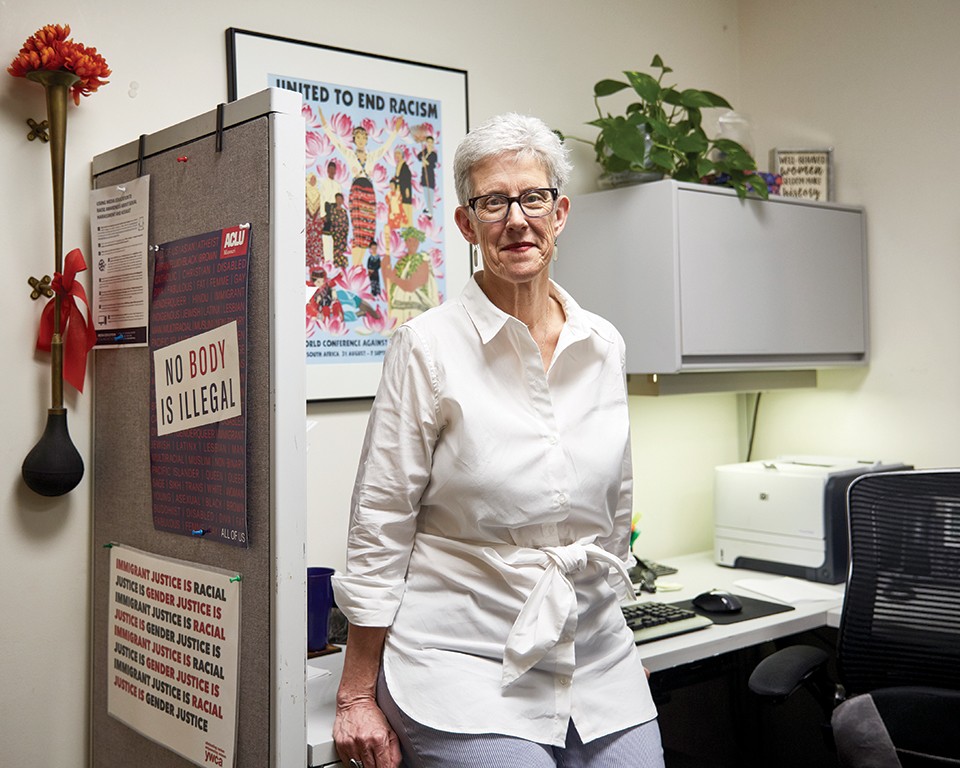
GROWING PARTICIPATION
In each of the ten Witnessing Whiteness sessions in the local YWCA's program, participants spend the first hour discussing and reflecting on a chapter, in large and small groups, through "listening pairs" and by journaling. The second hour is activity-based.
Facilitators choose the activities from a 150-page guide created by Mary Ferguson, who took over for Hunter as the St. Louis YWCA's racial justice director in 2016.
For Chapter 3, "Uncovering a Hidden History," participants might share biographies of white anti-racist activists such as Elijah Lovejoy and Jane Elliott, or outline the parallels between past practices, like redlining or naturalization laws, and current ones.
Ferguson wrote the manual to provide parameters for the pool of what is now more than 100 facilitators, a group that mushroomed in the wake of Michael Brown's 2014 death and the ensuing protests.
When the program first started in 2009, one group met at a time. When it wrapped up, another would start. After word spread and demand spiked, Ferguson implemented a schedule. Groups now run from January to May and August to December. More than 3,500 people in the region have now participated in Witnessing Whiteness.
Almost five years after Brown's death, Ferguson attributes the continued growth to "local and national reinforcement. Everything has echoed what was happening here, all of the spoken and unspoken ways that race is included in political and social events."
White people hear about disparities — police shootings, immigration policies, incarceration rates — and they want to understand what's going on, she says.
The St. Louis YWCA uses a "spiral" model that allows Witnessing Whiteness to grow with little funding. Participants buy their own books, but there are no other costs. At the end of the session, anyone who is interested can attend a daylong training to become a facilitator.
That's what Lexie Walsh, 27, did after participating two years ago. A Philadelphia transplant, Walsh heard about the program while at Washington University. She said she wanted to learn more about how being white affected her personally and how it influenced the systems she lives and works in.
Walsh, of Tower Grove South, just wrapped up her third session as a facilitator. It's not always a linear process toward racial awareness, she says. It can be humbling.
"You don't know what you don't know. People come in knowing stereotyping is bad, that individual acts of racism are wrong," she says. But coming to terms with the racism that is manifest in housing, government, education and labor "can be an emotional process of working through the weeds."
RIPPLE EFFECTS
The book concludes with suggestions for taking action. And though some people drop off after the program, many others take up the anti-racism mantle, says the YWCA's Ferguson.
"I want people to advocate or come up with new solutions," she says. "But I don't want to discount smaller, personal things."
Like being deliberate in how you raise your children.
Laura Horwitz, 37, of Clayton, participated in Witnessing Whiteness in 2015. She had moved back to her hometown the year before and connected with Adelaide Lancaster, 39, another East Coast transplant with young children and a background in community building.
Horwitz, the mother of two, says she was trying to figure out her role amid the tension following the fatal shooting of Michael Brown by a white police officer. Like many folks, she noticed that white and black people didn't view that flashpoint in the same way.
"White people were concerned with the specifics surrounding Michael Brown's death, while black people were focused on the root causes of the Ferguson movement," says Horwitz. "To take that thinking down to the family level: We're not even talking about the same thing in our homes." Many white families never discuss race with their children. For families of color, ignoring it is not an option, she says.
Lancaster, who has three kids and lives in Webster Groves, says she and Horwitz wanted to figure out a way to make conversations about race more natural for white families.
Books would be the conduit.
Horwitz and Lancaster's project, We Stories, became an official nonprofit in 2016. The two women combed through lists of diverse children's stories, reading and discussing them with their own kids. They tapped experts such as Kira Banks, a professor of psychology at Saint Louis University and the host of a podcast called Raising Equity.
Banks, who is black, says that many white parents were raised thinking there was a simple solution: "Treat everyone as an individual and be colorblind, and it will solve the problem. It won't."
Research has found that babies as young as six months notice differences in skin color, and racial bias begins to solidify by age seven — even when the adults in their lives do not exhibit racial biases.
Using books to spark conversation lets "white families increase their comfort level around topics such as race and difference," says Banks. "Being a white anti-racist person takes work. You need internal reflection and to be comfortable in your own skin."
At We Stories, that work comes via four children's books and an online curriculum. Parents are prompted to ask questions about what their children notice in the books and in their own lives. They can turn to a Facebook group for advice and support.
In its first three years, 800 families have joined a We Stories cohort. The families are mostly white, though about fifteen percent identify as multiracial. The nonprofit hosts parent workshops and town halls throughout each session and invites its previous participants to join new alums at a wrap-up event.
DEFINING PREJUDICE
At City Garden Montessori in the Shaw neighborhood, We Stories' twelfth cohort comes together on a Sunday afternoon in March to listen to a few more books.
"The theme of today is what comes next," Lancaster says, following a rousing guitar singalong in the elementary school's multipurpose room.
The 50 or so families disperse: toddlers and their parents to the gym to page through board books and play with baby dolls of various hues, while herds of preschoolers move into classrooms for a story-centered activity, their parents left to themselves for some adult discussion.
In one classroom, about a dozen four- to six-year-olds listen to Mae Among the Stars, a picture book about a young Mae Jemison, the first female African American to travel into space.
Volunteer Beth Doht explains the word prejudice to the exuberant crew as they blurt out what it might mean, "how our outsides don't always tell us about our insides." Then they get to work crafting self-portraits on paper plates, carefully examining each Crayola Multicultural crayon to find just the right shade.
Meanwhile, Mary Lamboley of St. Louis County sits at a table with other parents, trading advice about how to answer kids' questions about race, where to find information and how to diversify friendship groups.
Lamboley talks about reading her son his favorite book, a story about a police officer, over and over before realizing that every character in it is white.
"He would see black people and say, 'That's a scary person.' I didn't realize I was perpetuating those beliefs by where I lived, what I read, our habits and patterns," she says. Growing up, "race was basically about 'what are we going to do about those poor kids in Africa?'"
Lamboley knew she needed to learn more. She went through Witnessing Whiteness and became a facilitator. We Stories helped her find ways to name and celebrate differences with her son, she says.
And it was also about the fun of discovering new favorite books.
Her son, Theo, skips over to the table, helps himself to a bag of popcorn and snuggles into his mom's lap. The five-year-old, a NASA fan wearing a sweatshirt printed with astronauts, tells his mom the best part of the story he heard was when Mae rocketed into space.
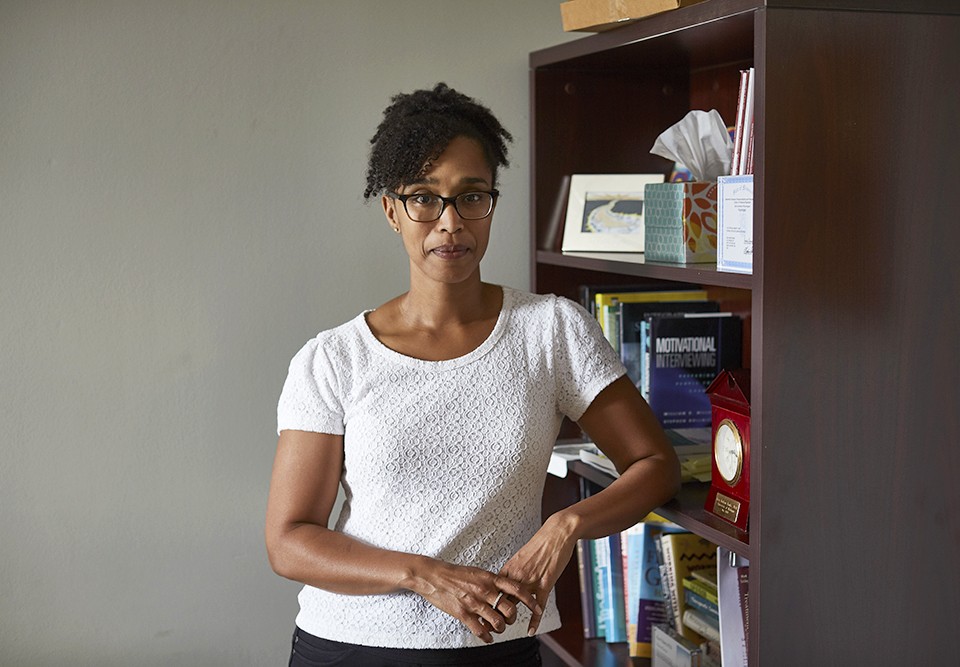
DEVELOPING CURRICULUM
On a different weekend in March, eight educators convene in the Creve Coeur home of Angela Kelly, a reading specialist in the Ladue School District.
Kelly and Rachel Morgan, who works at the Children's Community Microschool, have gathered teachers for their inaugural advisory session to evaluate a prospective Community Conversations curriculum.
The two women have spent the past eighteen months compiling resources to help white third- through eighth-graders learn about the history and implications of race in the U.S. They wrote it to adapt to multiple settings, including after-school groups, church and community organizations or even regular classrooms.
The advisory group combed through lessons on identity, but they weren't the first to provide input. Kelly and Morgan had already spoken to the YWCA's Ferguson and We Stories' Horwitz, members of Educators for Social Justice and an early childhood group.
They want to get it right before launching a pilot in the fall.
"We welcome all feedback, especially the stuff that's hard to hear," Morgan, 43, tells the group.
The four-part curriculum begins by looking at artwork and poetry by people of color, such as Cbabi Bayoc, a St. Louis artist and illustrator.
One teacher suggests using paint samples for a lesson on skin tones. Another questions whether children will know what "mottled" means.
At the next meeting, they plan to dive into history lessons, from before enslavement through the civil rights movement, acts of oppression and resistance, the Trail of Tears, the Harlem Renaissance and Japanese internment. It's a history many white children don't know, Morgan says.
The hefty topics are necessary, says Kelly, 50, who is a Witnessing Whiteness alum. "I felt like I had gotten so much from being in a group with white people and I wanted to do that for children.
"Our ultimate goal is that the white children who have participated in the Community Conversations will feel comfortable in engaging in these conversations with people of color. We hope it leads to action in anti-racist ways."
That action can take many forms, says Hunter, the program founder. It's voting. Speaking up. Being thoughtful about where you spend your money. Advocating at your school or workplace.
"The truth is still a struggle, but I'm overjoyed at the infinite possibilities," she says of her decade-long program. "I hope more things ripple off of it. There's so much work to do."
Editor's note: Due to an editing error, a photo caption referred incorrectly to Kira Banks' role. She analyzed data assessing the effectiveness of Witnessing Whiteness groups; she did not assist in forming We Stories. We regret the error.

